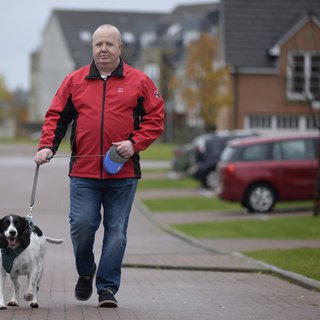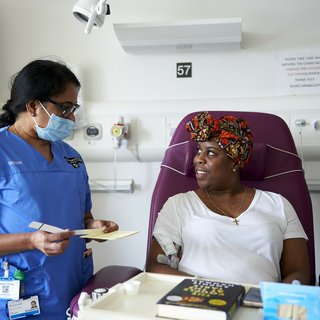I chose to be active in my own rescue from AML
When Doug was diagnosed with acute myeloid leukaemia and told he needed a stem cell transplant, he took inspiration from the philosophy of stoicism to manage his recovery and look on the bright side. He explains how staying positive helped.
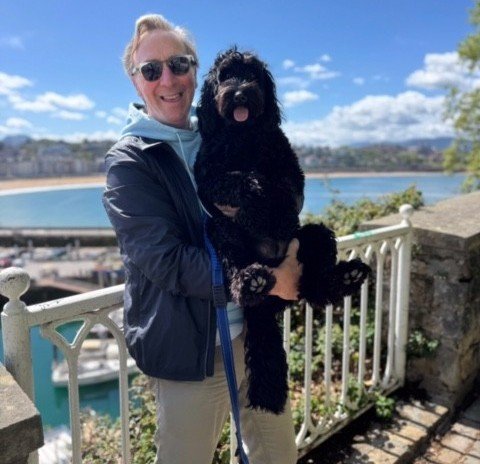
I was diagnosed with acute myeloid leukaemia (AML) in 2021, and I knew pretty much straight away that this was something I had to face up to in order to give myself the best chance of recovery. I practice the philosophy of stoicism, which encourages us to try and be the best we can be in every given moment, no matter what opportunity or test we’re facing. My aim at the time was to stay physically and emotionally strong so I could deal with the treatment I’d need, which would involve chemotherapy and a stem cell transplant.
The way I saw things, I was an equal partner in tackling the AML – the doctors and the treatment would do their thing, and I had to hold up my side of the bargain too.
I researched AML so I knew what I’d be up against, which also enabled me to meaningfully engage with my consultant when we discussed my treatment. The hardest thing was probably telling my friends and family, but I knew from the beginning that I wasn’t alone. My wife Di was with me every step of the way, and we were lucky to receive so much love and support from the people around us.
I was also fortunate in that I had given up cigarettes a long time ago, and I don’t drink very much alcohol. After I’d retired I’d decided to get as physically healthy as I could, and I did regular exercise and ate well. I was therefore in a good position to take on the leukaemia and the gruelling treatment, and I didn’t want it to disrupt my usual routines too much. Before my diagnosis I had a great life that I loved, and I wanted to maintain as much of it as possible.
Before I was admitted to hospital for my first round of chemotherapy, I prepared myself for what would need to change and how I might meet these challenges.
It was important for me to banish the idea that going into hospital meant being in bed or wearing pyjamas all day. I wanted to get up and dressed each morning. I also thought about the things I liked to do – watching films and TV, listening to music, reading and writing, and exercising – and sorted out ways of continuing to do those things. We made sure I had my Kindle, downloaded playlists onto my phone, bought some new books, and packed a note pad. I also invested in a new yoga mat.
By the time I actually packed my hospital bag, I’d acknowledged the leukaemia and mentally sent it away. I wouldn’t pay it any more attention, my focus was going to be on getting through treatment and counting my blessings.
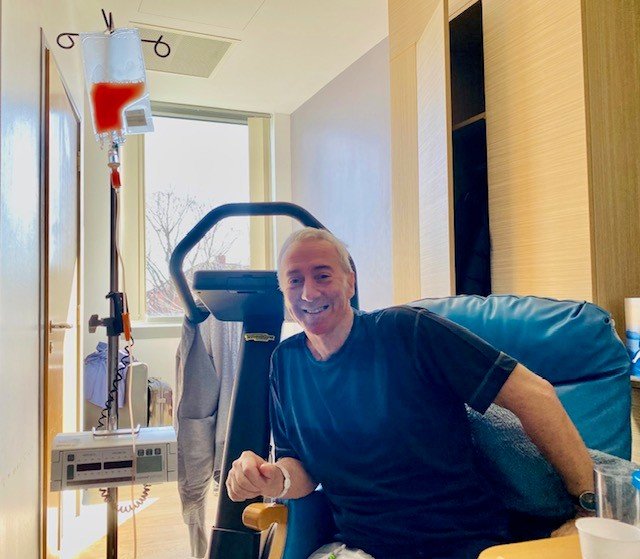
Doug in hospital on the day of his stem cell transplant
Whilst I was on the ward, I came to learn what it really meant to be “active in my own rescue”. This is a concept originally coined by Marcus Aurelius, and it means doing whatever you can to help yourself, even if you end up having to rely on others as well. I have a natural tendency to assume things will pass, and this led to a delay in me reporting symptoms that turned out to be a serious infection. I ended up in the ICU for seventeen days, and this obviously presented a whole new set of mental and physical challenges that I had to deal with and eventually put into perspective.
I talked with Di about our respective experiences whilst I was in ICU as often as necessary, in an attempt to process it. She had kept notes which filled in many blanks for me, and this more than anything helped me come to grips with it all.
Speaking of Di, I can’t emphasise enough how important it is to have a key partner or advocate with you during treatment. She was my constant coach, encouraging me to keep going whenever it almost became too much, as well as my lead researcher, always there in conversations with the consultants. She also acted as a critical daily link to ordinary life, and was the main conduit of communications with our wider tribe.
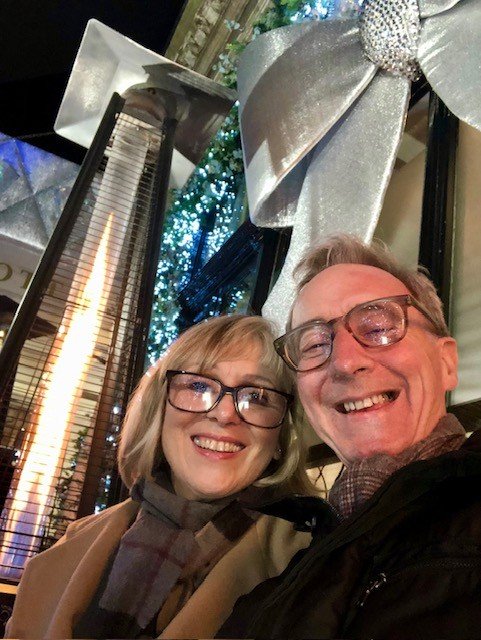
Doug and his wife Di
After that first admission, I knew my next challenge was to ready myself for the next stage of treatment. I needed more rounds of chemo before my transplant, and I knew what doing the right thing looked like – I had established a good routine before going in the ICU, and I did whatever I could to get back on the horse. Yes, eating was hard. Bathing was hard. Dressing was hard. Walking was hard. Even getting out of bed was hard. However, in the stoic mindset, I never felt low or frustrated.
My routine was initially very different, but I still had the discipline of daily exercise and eating regularly to keep me going.
The nursing team arranged an exercise bike beside my bed which I used every day between pounding the corridors on foot. For anyone else having treatment in hospital, I’d recommend asking your team about an exercise bike, as I didn’t realise it was possible until someone mentioned it.
I eventually had my stem cell transplant in 2022, and although my journey as a whole has featured various ups and downs, overall it was a success. I am currently leukaemia free, at home, and doing most of the things I did before my diagnosis. Every day I give thanks to the medical team whose job it was to give me my life back, our family and friends whose love we continue to bask in, and the selfless donor whose stem cells made it all possible.
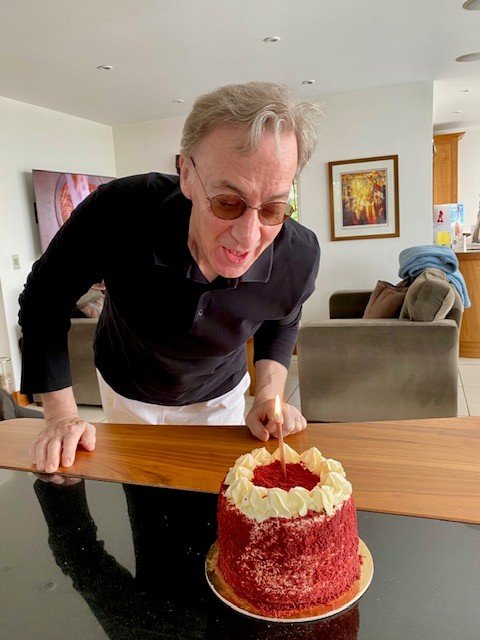
Doug celebrating his birthday and the first anniversary of his stem cell transplant
The best tip I can give to others with AML is to prepare yourself, in mind and body, for your treatment. Commit to doing everything you can to give yourself the best chance, and take time to put things in perspective.
Also, remember that your medical team will always want to hear about any changes in how you feel, so tell them as soon as possible if you notice any new symptoms or side effects. Be specific about the what and the where, and let them help you. The right mindset can make the world of difference, but you don’t have to face everything alone.

